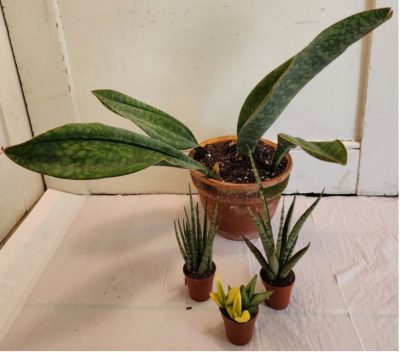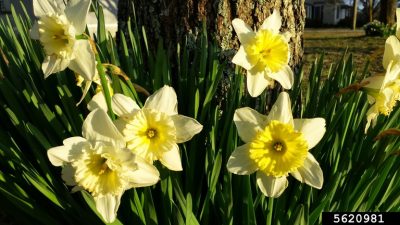By Heather Zidack, UConn Home & Garden Education Center

Rhododendrons are looking rough this spring. You’ve probably seen it in your yard or in your neighborhood. The UConn Home & Garden Education Center has been seeing an increase in the number of calls regarding injury or damage to rhododendrons. In most cases, we are finding these reports to be winter injury. This is an environmental type of damage, caused by a perfect storm of conditions that we have seen throughout the state. So, let’s take a closer look into why this is happening.
Plants lose water through their leaves. During active growth, that water is constantly replenished from the roots. When the temperatures drop and the ground freezes in the winter, available water becomes limited. Plants have adapted to this in many ways. Dormancy is triggered by multiple factors, but water conservation is certainly one of those. Deciduous trees shed their leaves completely. Evergreens have developed various leaf adaptations to help with survival, too.
As broadleaf evergreens, rhododendrons have developed a waxy coat on their leaves to help prevent water loss. They also have a physiological mechanism to help defend themselves further. Just as you’d clasp your hands together on a cold winter day to shield them from the elements, rhododendron leaves curl themselves into cigar-shaped cylinders. The leading theory is that this happens to protect the leaves from further water loss. This natural defense mechanism has grabbed our attention this spring, since our weather patterns have lent a hand in amplifying a natural phenomenon.
At the end of last summer, CT started to see a moderate drought in much of the state. These conditions have persisted through this spring. Water availability was limited as plants went into the winter and remained limited throughout the season. Add in frozen soil and harsh winter winds and the environmental stress increased even more. When water is unavailable to the roots – through either freezing or drought conditions, plants lose their ability to return water to the living tissues. This drying out, referred to as desiccation, leads to winter injury or winter kill depending on the severity of damage. While we are finally seeing rain, these plants need time to recover and may not be ready to unfurl just yet.
Many have noted that some plants are faring better than others even within the same bed. This is also normal to some extent. It can be easy to forget that plants are living things in our landscapes. There is going to be variance in their ability to withstand environmental pressures and their recovery rates.
If you are seeing this in your rhododendrons, be patient this spring and monitor over the next month or so. With an increase of rain in the forecast, the extra hydration should help plants recover - or at least push out new growth. These shrubs will shed any leaves that are damaged beyond repair on their own. Do not prune or fertilize shrubs until the end of May to avoid further injury. If we go a week without rain, consider watering your shrubs to help speed up recovery – but only water if the soil feels dry to the touch! If by mid-late May you are seeing absolutely no improvement, we start to consider other factors that may contribute to the plant’s health. For now, they just need a little more time.
The UConn Home & Garden Education Center supports UConn Extension’s mission by providing answers you can trust with research-based information and resources. For gardening questions, contact us toll-free at (877) 486-6271, visit our website at homegarden.cahnr.uconn.edu, or reach out to your local UConn Extension center at cahnr.uconn.edu/extension/locations.
This article was published in the Hartford Courant Apr. 12 2025










